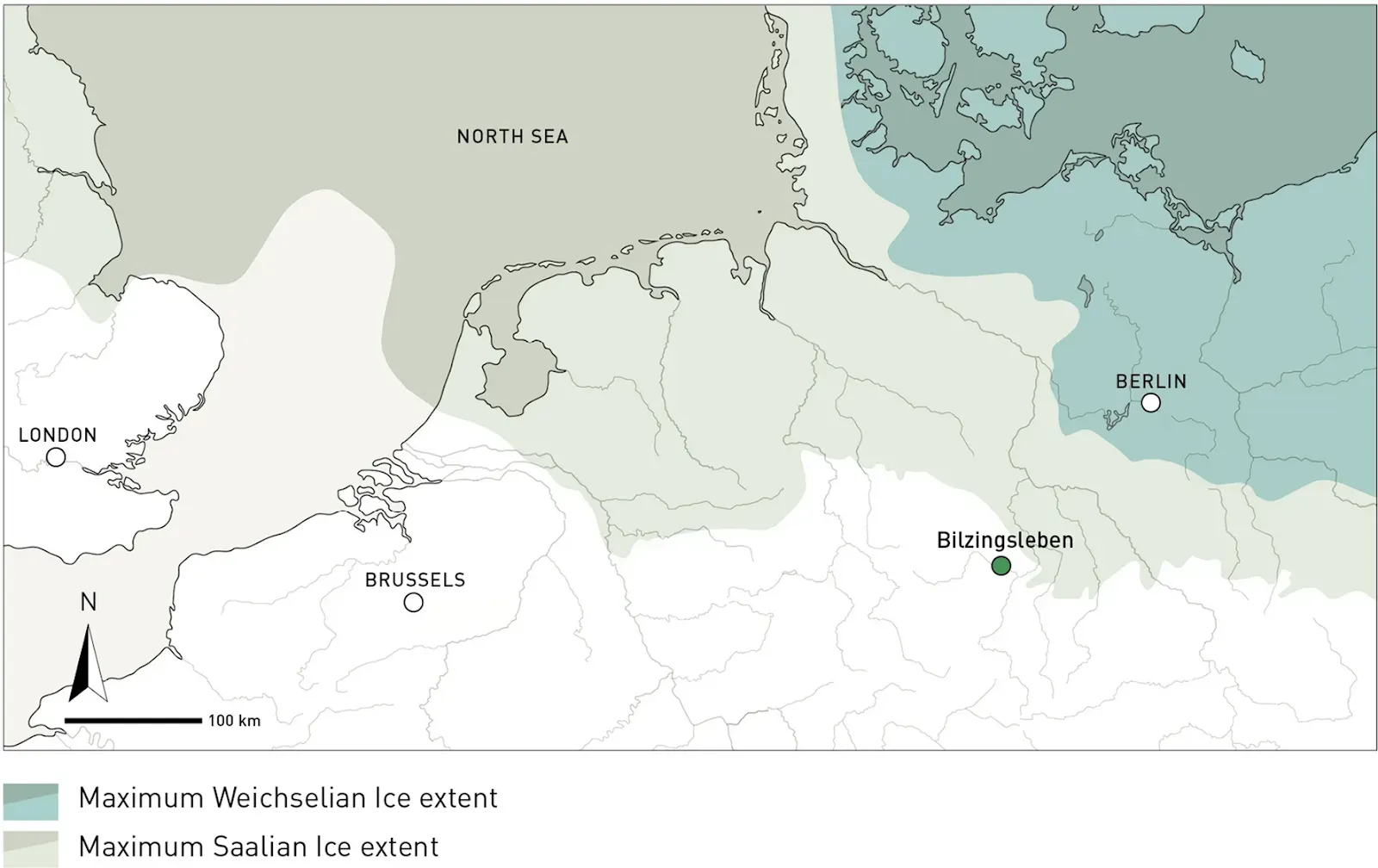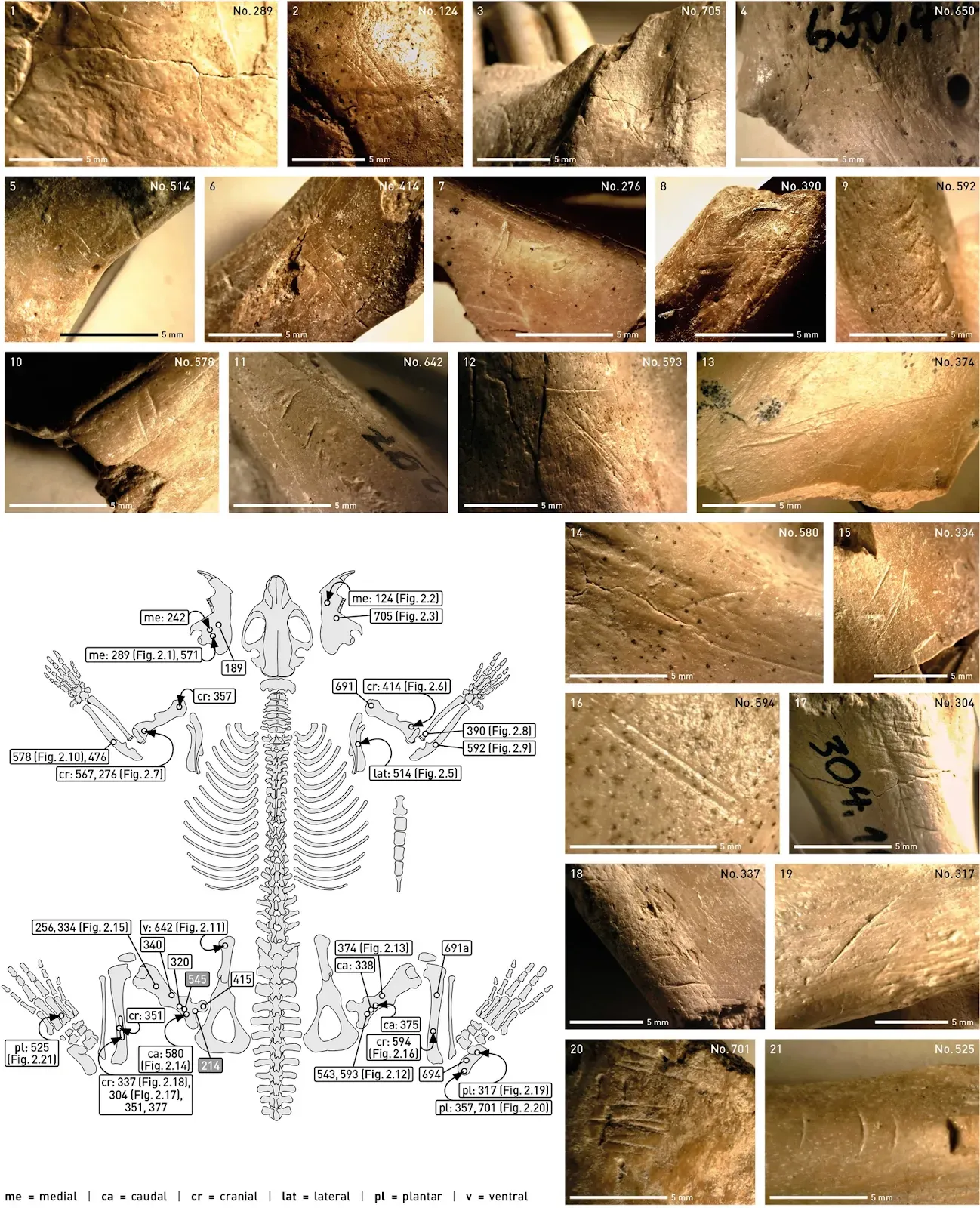Early humans hunted beavers, 400,000 years ago | Press and Public Relations
You know, this is so much like shooting fish in a barrel, that I would feel sorry for creationists. If only they were so smugly certain and lacking in self-doubt, but here's another of those so predictable scientific papers that refute creationism without even trying.
Previously, it was thought that Middle Pleistocene humans in Europe hunted large game such as bovids and rhinoceros for food, but this may be because the bones of large animals are better preserved than the bones of smaller mammals.
Now, a new study by a team from Johannes Gutenberg University Mainz (JGU), the Leibniz Zentrum für Archäologie (LEIZA), also in Mainz, and Leiden University in the Netherlands, shows that Middle Pleistocene humans hunted beavers as a food resource and possibly also for their pelts, 400,000 years before creationists think Earth was created.
The beavers they hunted were the now extinct Eurasian giant beaver, Trogontherium cuvieri, and the still living European beaver, Castor fiber.
The team have published their findings in the journal Scientific Reports.
The publication is accompanied by a brief press release from Johannes Gutenberg University:
Early humans hunted beavers, 400,000 years ago
Evidence from eastern Germany shows that early humans had a more varied diet than previously known
Around 400,000 years ago, early humans hunted beavers as a food resource and possibly also for their pelts. This is the conclusion of a team from Johannes Gutenberg University Mainz (JGU), the Leibniz Zentrum für Archäologie (LEIZA), also in Mainz, and Leiden University in the Netherlands. In their publication in the journal Scientific Reports, the authors show that Middle Pleistocene humans systematically fed on these smaller animals and hence had a more varied diet than thusfar known. Previously, the opinion was that that hominins of this age primarily subsisted on large mammals, such as bovids and rhinoceroses, for one simple reason: "The remains of large mammals from this period are generally much better preserved than those of small ones, not to mention plant remains," says Sabine Gaudzinski-Windheuser, Professor in the Department of Ancient Studies/Section Pre- and Protohistoric Archaeology at JGU and Director of the Archaeological Research Centre and Museum for Human Behavioural Evolution, MONREPOS, in Neuwied, which is part of LEIZA. She authored the new study together with two colleagues, Lutz Kindler, also from JGU and MONREPOS, and Wil Roebroeks from Leiden University. "Until now, cut marks on Palaeolithic beaver bones had been identified very rarely and on isolated bones only. Dietrich Mania's extensive and long-term excavations in Bilzingsleben yielded a large number of beaver remains. Their study has now revealed for the first time the long-term strategy behind the exploitation of these animals," she explains.
Targeted hunting of young adults
The researchers used magnifying glasses and digital microscopes to examine the approximately 400,000-year-old bones of at least 94 beavers, excavated several decades ago in Bilzingsleben, Thuringia. This enabled them to identify cut marks from stone tools that indicate intensive use of the carcasses. "It is interesting that the remains in Bilzingsleben mainly represent young adult beavers," says Gaudzinski-Windheuser. This indicates that hominins back then would have deliberately hunted inexperienced but fully grown and fat-rich animals. Fat was a very important food resource during the Pleistocene. "Until now, it was generally thought that people in Europe fed primarily on large game until around 50,000 years ago, and that this was an important difference to the more flexible dietary strategies of modern humans. We have now demonstrated that the hominin food spectrum was much broader much earlier," says Gaudzinski-Windheuser.
Which hominins would have lived in Europe 400,000 years ago? Around 400,000 years ago, during the Middle Pleistocene epoch, several hominin species inhabited Europe. One of the prominent hominins from that time period was Homo heidelbergensis. This species is considered to be a common ancestor of both Neanderthals and Homo sapiens. Homo heidelbergensis is known from various fossil finds across Europe, including sites in Spain, Italy, Germany, and England.The authors leave open the identity of the hominins who hunted beavers in their paper, which is published open access in Scientific Reports:
Neanderthals (Homo neanderthalensis) also appeared in Europe during the later part of the Middle Pleistocene and persisted until around 40,000 years ago. They were well-adapted to the colder climates of Europe during this time.
Additionally, some evidence suggests the presence of another hominin called Homo antecessor in the Iberian Peninsula around 800,000 to 1.2 million years ago. However, the exact taxonomic status of Homo antecessor is still debated among scientists.
Overall, during the Middle Pleistocene in Europe, Homo heidelbergensis was a key hominin, with the emergence and persistence of Neanderthals later in the period.
AbstractNot only were there humans hunting beavers in Europe, some 400,000 years before creationists think Earth was created, but those humans were archaic hominins who lived before creationists believe the founding couple of all humans were created by magic, ludicrously counter-factual though that tale is.
Data regarding the subsistence base of early hominins are heavily biased in favor of the animal component of their diets, in particular the remains of large mammals, which are generally much better preserved at archaeological sites than the bones of smaller animals, let alone the remains of plant food. Exploitation of smaller game is very rarely documented before the latest phases of the Pleistocene, which is often taken to imply narrow diets of archaic Homo and interpreted as a striking economic difference between Late Pleistocene and earlier hominins. We present new data that contradict this view of Middle Pleistocene Lower Palaeolithic hominins: cut mark evidence demonstrating systematic exploitation of beavers, identified in the large faunal assemblage from the c. 400,000 years old hominin site Bilzingsleben, in central Germany. In combination with a prime-age dominated mortality profile, this cut mark record shows that the rich beaver assemblage resulted from repetitive human hunting activities, with a focus on young adult individuals. The Bilzingsleben beaver exploitation evidence demonstrates a greater diversity of prey choice by Middle Pleistocene hominins than commonly acknowledged, and a much deeper history of broad-spectrum subsistence than commonly assumed, already visible in prey choices 400,000 years ago.
Introduction
A solid understanding of early hominin diets, key for tracking human behavioral and cognitive evolution, is hampered by the fact that the archaeological record is strongly biased towards the remains of large ungulates, while it is well-established that a reliance on (relative lean) game meat alone would not have provided a sufficient subsistence base given human dietary needs1,2. Despite taphonomic and site-preservation biases3, recently various studies have documented a greater diversity in hominin food choices, including regular exploitation of a variety of small animals, plant and aquatic (freshwater and marine) foods, not only for the early modern human lineage in Africa4,5,6, but also for Neanderthals, be it mainly from the southern parts of their range3,7,8,9,10. Most of that evidence dates respectively to the Middle Stone Age of Africa and to the later Middle Palaeolithic in Europe, from about 125,000 years ago (125 ka) onwards. Far less is still known about the subsistence base of the Middle Pleistocene predecessors of both lineages (e.g.10,11,12), with that record still strongly suggestive of a narrow, large- and medium-sized ungulates focused subsistence base13.
Here we present new data of particular relevance for our knowledge of Middle Pleistocene diet breadth, from the ca 400 ka old (Marine Isotope Stage [MIS] 11) hominin open air site of Bilzingsleben, in central Germany (Fig. 1) (Supplementary Information Text 1), with, as shown below, abundant evidence for systematic exploitation of beavers. Our study was triggered by a recent analysis of the rich Bilzingsleben beaver assemblage by Heinrich and Maul14, who established a prime-age mortality profile for the Castor fiber remains from the site, leading them to infer that these individuals had been targeted by human hunters. The beaver material from Bilzingsleben mainly derives from Castor fiber, the Eurasian beaver, a close relative of Castor canadensis, a key prey species of North American hunter-gatherers, much sought after for its fat and fur. Trogontherium cuvieri is also present in the Bilzingsleben material, be it in much smaller numbers (see below and Table 1). This extinct beaver was of similar size as the extant Eurasian beaver15, and often found in the same Pleistocene deposits, though it is unclear whether they shared the same habitat or occupied slightly different ones14. Castor fiber is currently the largest rodent in Europe, with very strict ecological preferences, which include the presence of sufficiently large water bodies and a dense tree cover. This keystone species influences the local hydrology and its environment. For the British record it has been suggested that early Holocene foragers were attracted to beaver territories with their well-maintained water bodies surrounded by abundant wood resources16.Next to a rich Holocene record of beaver exploitation in Eurasia and northern America, there is some scattered evidence for exploitation of beaver in the later phases of the Middle Palaeolithic. It mostly dates from the relatively short Last Interglacial (around 125,000 years ago), when a warm temperate climate and forested conditions provided ideal habitats for these semi-aquatic animals in major parts of Eurasia17. For earlier warm-temperate phases, data were virtually absent thus far, with no convincing evidence for regular exploitation of these animals, despite being of such great importance for recent hunter-gatherers in the northern parts of Eurasia and North America. (Supplementary Information Text 2). Location of Bilzingsleben on the northern European plain, relative to the maximum extent of the Saalian and Weichselian glaciers. Both ice-sheets ended north of the Bilzingsleben site, enabling preservation of the locale.
Location of Bilzingsleben on the northern European plain, relative to the maximum extent of the Saalian and Weichselian glaciers. Both ice-sheets ended north of the Bilzingsleben site, enabling preservation of the locale. Cut marks on Castor fiber skeletons (illustrations are arranged according to body parts) and their anatomical position. The numbers denote the inventory designations of individual bones with cut marks. For a detailed description see text.
Cut marks on Castor fiber skeletons (illustrations are arranged according to body parts) and their anatomical position. The numbers denote the inventory designations of individual bones with cut marks. For a detailed description see text.
Gaudzinski-Windheuser, S., Kindler, L. & Roebroeks, W.
Beaver exploitation, 400,000 years ago, testifies to prey choice diversity of Middle Pleistocene hominins.
Sci Rep 13, 19766 (2023). https://doi.org/10.1038/s41598-023-46956-6
Copyright: © 2023 The authors.
Published by Springer Nature Ltd. Open access.
Reprinted under a Creative Commons Attribution 4.0 International license (CC BY 4.0)
Of course, creationists have been conditioned to dismiss all these archaeological finds as lies or based on 'flawed dating' or part of a massive conspiracy, or even planted by Satan to mislead us or by their creator go as a test, and assert they were all drowned in a genocidal global flood 4,000 years ago. But what they can't explain is how all those beaver bones ended up at one location in what is now Germany, and all showed cut marks where they had been butchered and skinned.
Who exactly did that butchering and skinning during a global flood?



No comments :
Post a Comment
Obscene, threatening or obnoxious messages, preaching, abuse and spam will be removed, as will anything by known Internet trolls and stalkers, by known sock-puppet accounts and anything not connected with the post,
A claim made without evidence can be dismissed without evidence. Remember: your opinion is not an established fact unless corroborated.